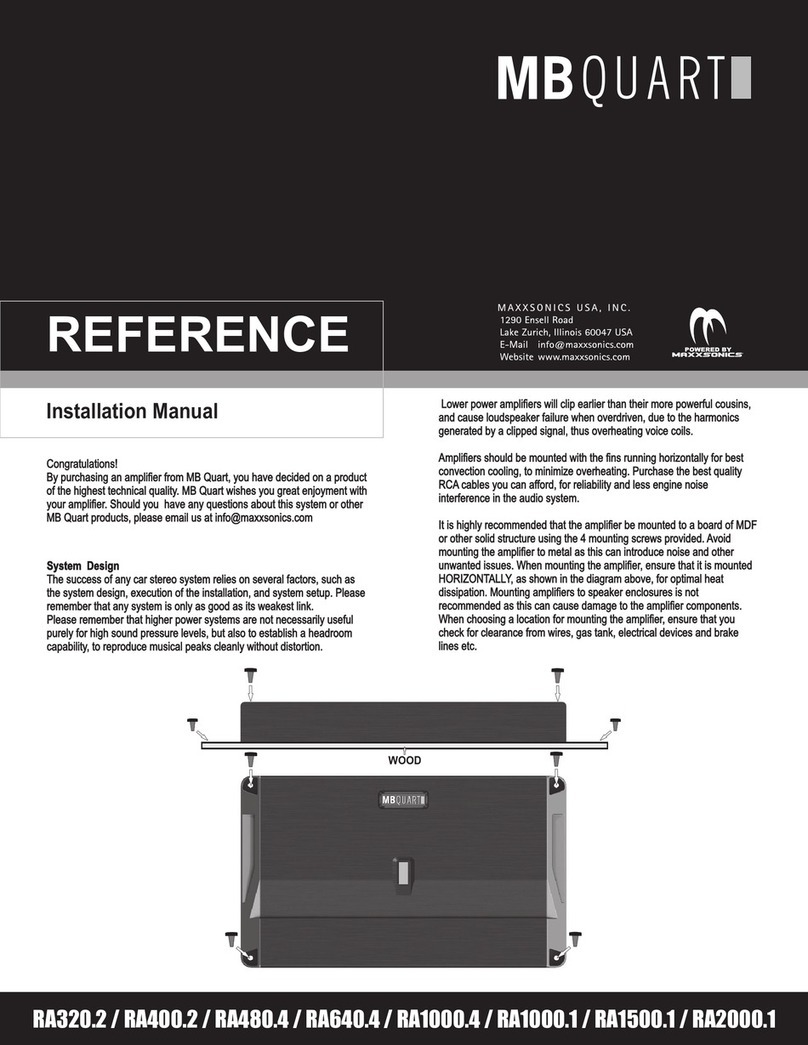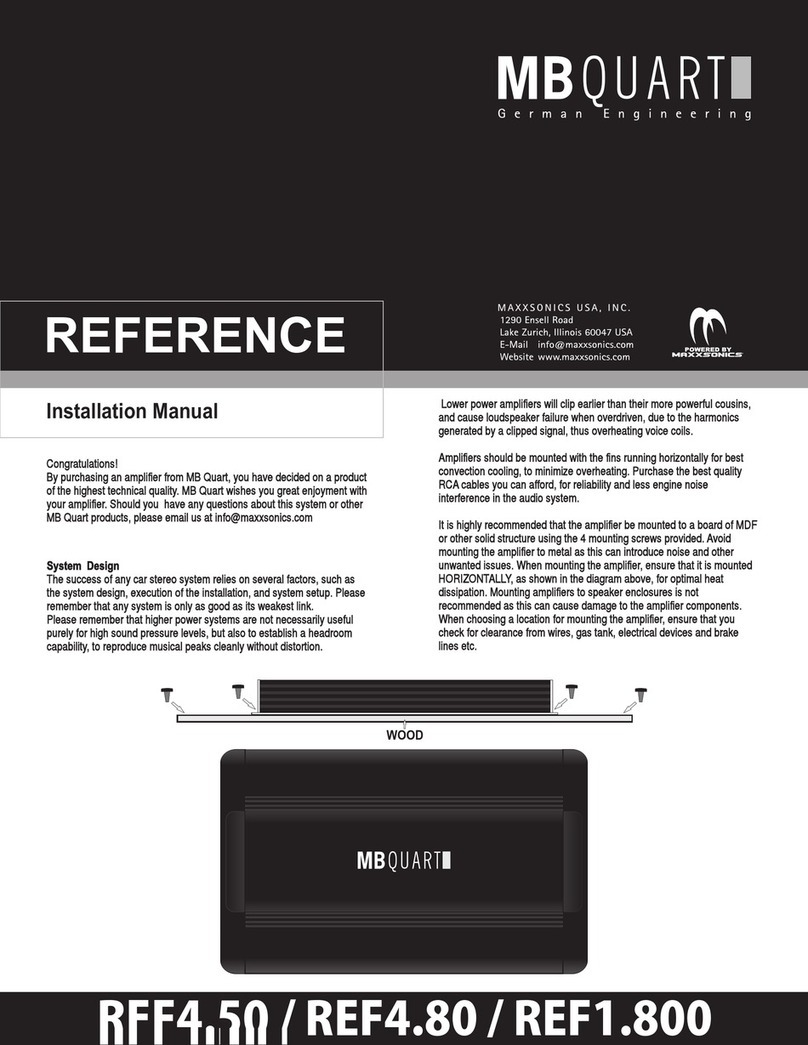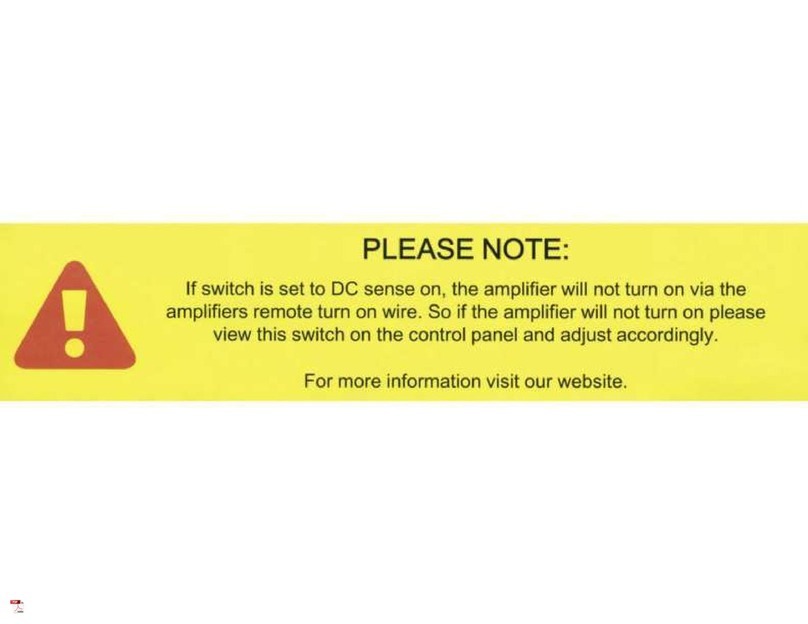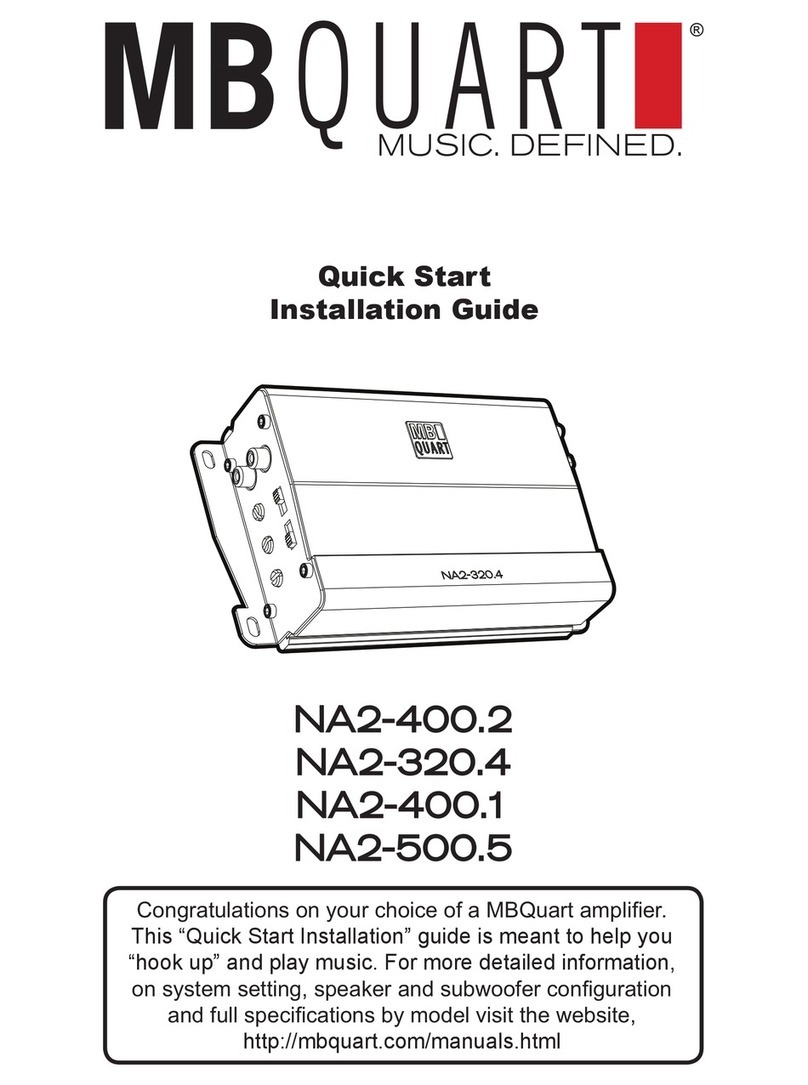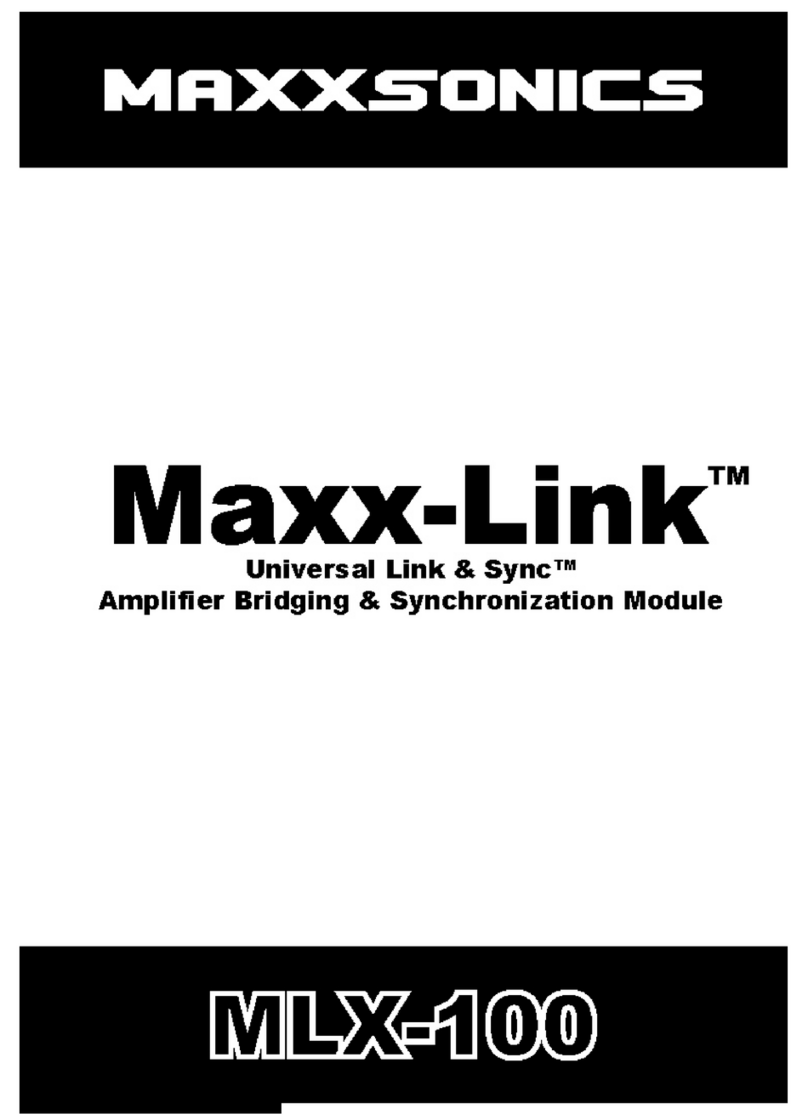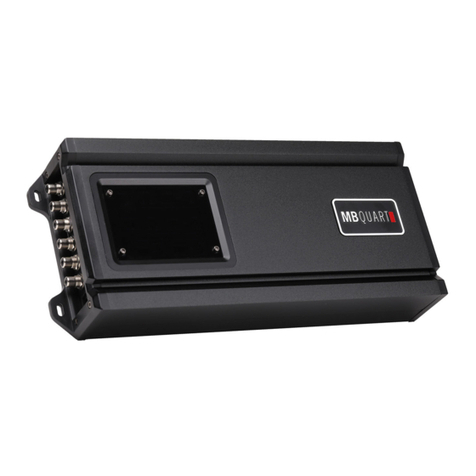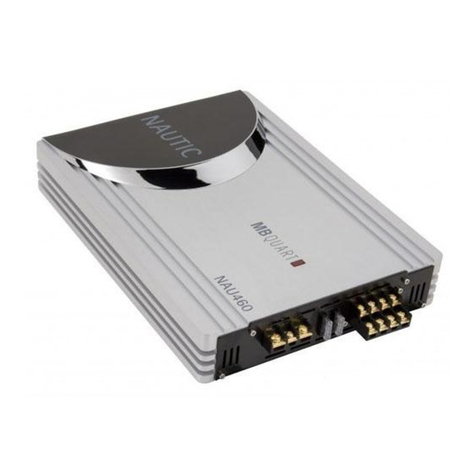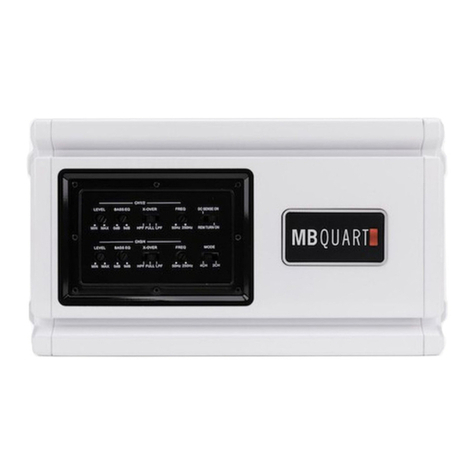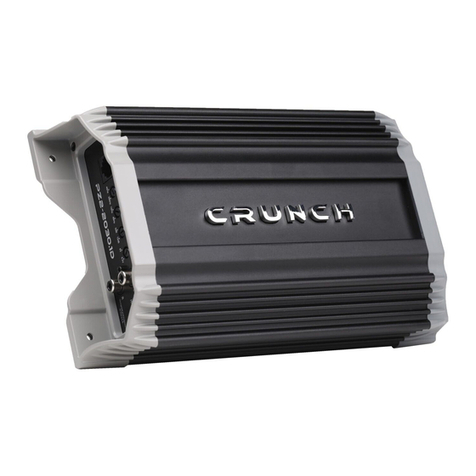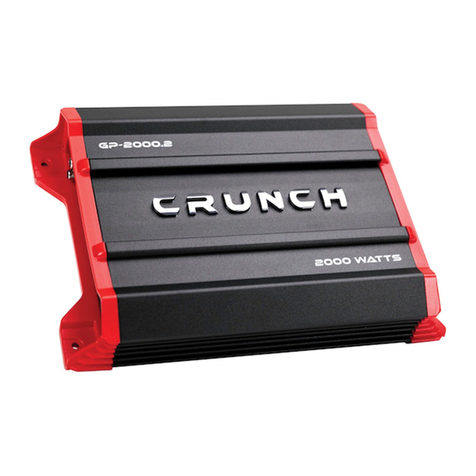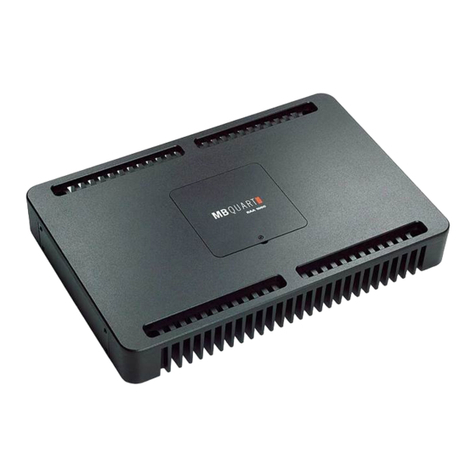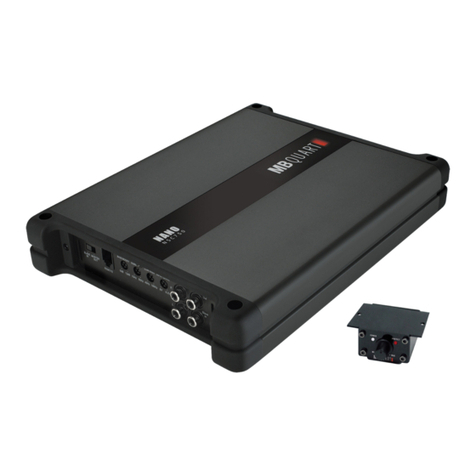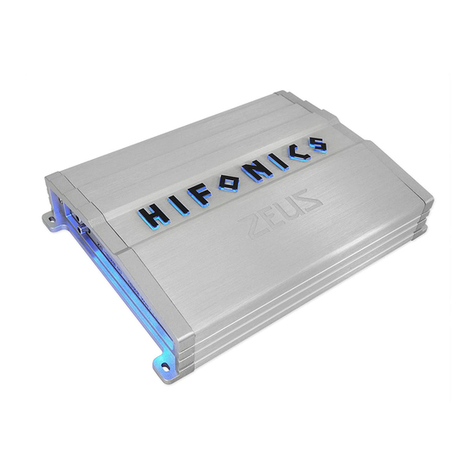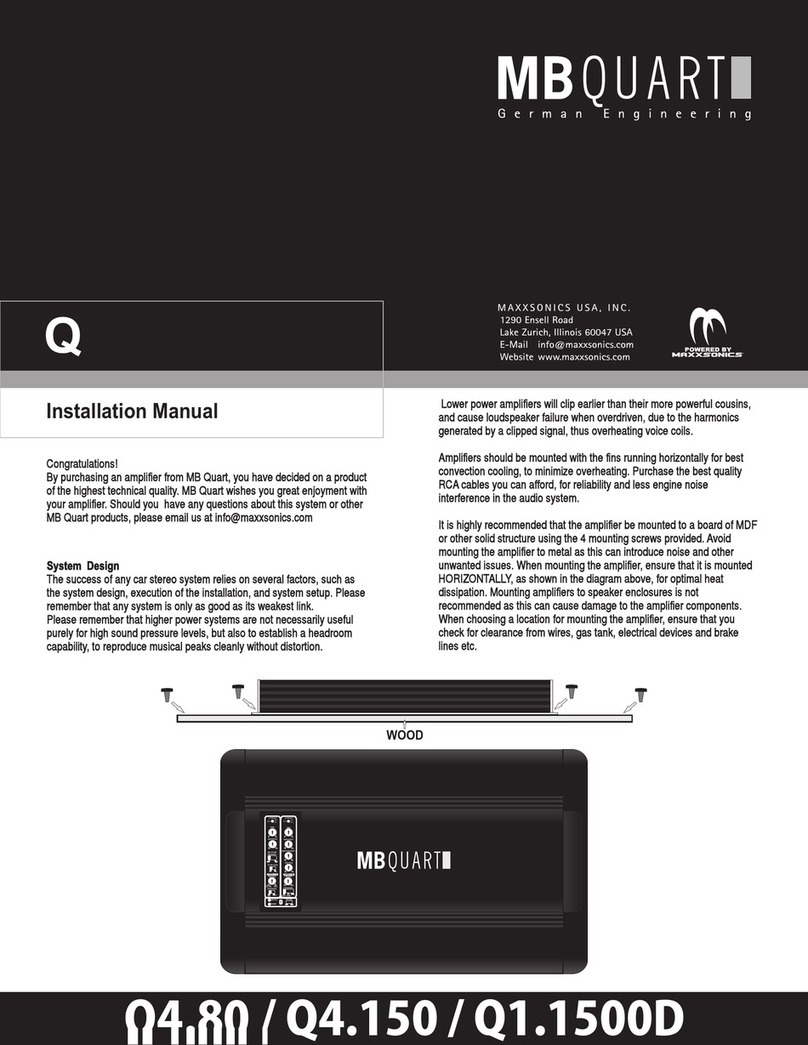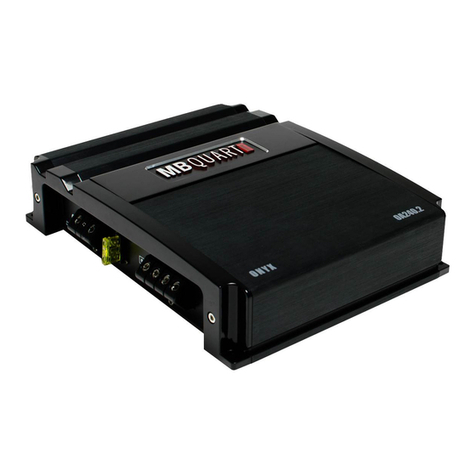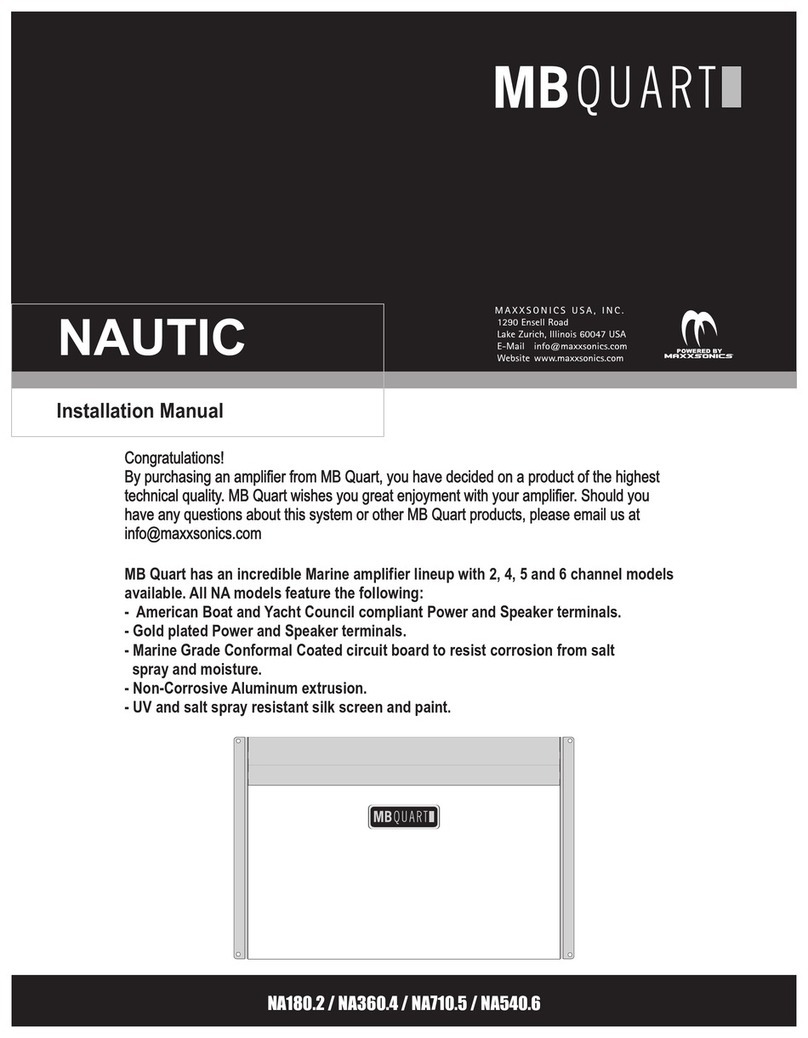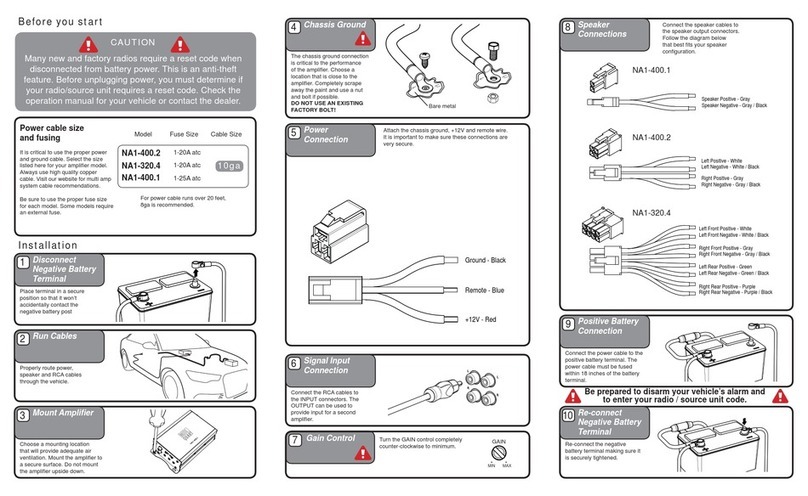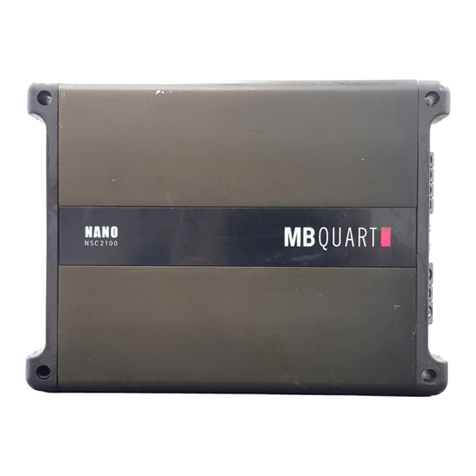TROUBLE SHOOTING
4
The key to finding the problem in a misbehaving sound system is to isolate parts of that system in a logical fashion to track down the fault.
Description of the Diagnostic system built into all MB Quart amplifiers
Thediagnosticsystemwillshutdowntheamplifier,untilresetbyturningtheheadunit off,andbackon.Thisstateofaffairswillbeindicatedbythe frontpanel
PROTECTLEDlightingupunderthefollowingconditions:
1-Ashortcircuitontheloudspeakerleads.
2-AninternalamplifierfaultthatcausesaDCoffsetontheloudspeakeroutput.
Shouldtheamplifiergointodiagnosticmode,simplydisconnectallRCAandspeakerleads,whilekeeping+12volt,powergroundandremoteleadsconnected.
1.Nowturntheamplifierbackon,andifthediagnosticLEDlights,theamplifierhasaninternalfault.
2.Ifnot,plugtheRCAcablesback,andresettheamplifier.Ifitgoesintodiagnosticnow,thefaultliesintheinput,eitherwithbadcablesorsourceunit.
3.IftheamplifierseemsfinewithRCAcablespluggedin,connectthespeakers,oneatatime,andifoneofthespeakersoritswiringisfaulty,itwillactivatethe
diagnosticsystem.
Amplifier heatsink overheating
Theamplifierswillshutdownwhentheheatsinktemperaturereaches80degreescentigrade,andturnbackononcetheunithascooleddownbelowthatpoint.
Causes of overheating:
1-Inadequatecooling-relocateorremounttoprovidebetternaturalairflowoverthefins.
2 - Driving high power levels into low impedances - back off on the volume control, and/or make sure you are not loading the amplifier with less than the
recommendedloudspeakerimpedance.
Low output power
1-Checkthatlevelcontrolshavebeensetupproperly.
2-Makesurethatthebatteryvoltage,asmeasuredattheamplifier’s+12voltandgroundterminals,is11voltsormore.
3-Checkall+12voltandgroundconnections.
Fuses blowing
1-Theuseofloudspeakerimpedancesbelowtherecommendedminimumswilldrawmorecurrent-check.
2-A shortonthemain+12voltcablefromthebatterytogroundwillcausethemainfusetoblow.
System does not turn on
1-Checkallfuses.
2-Checkallconnections.
3 - Measure the +12 volt and remote turn on voltages at the amplifier terminals. If these are non existent or low, take voltage measurements at fuse holders,
distributionblocks,theheadunit’s+12voltandremoteleadstolocalizetheproblem.
Noise problems
Systemnoisecanbedividedintotwocategories,hiss,andelectricalinterference.
Hiss, or white noise
1 - High levels of white noise usually occurs when amplifier level controls are turned up too high - readjust according to the procedures in section ”Setting up
systems after installation for best performance”
2-Anothermajorproblemthatcancauseexcessivehiss,isanoisyheadunit-unplugtheamplifierinputRCAcables,andifthehisslevelreduces,thesourceunit
isatfault.
Electrical interference
The inside of an boat is a very hostile electrical environment. The multitude of electrical systems, such as the ignition system, alternator, fuel pumps, air
conditioners,tomentionjustafew,createradiated electricalfields,aswellasnoiseonthe+12voltsupplyandground.Remembertoisolatetheproblem-first
unplug amplifier input RCA cables, if the noise is still present, check the speaker leads, if not, plug the RCA’s back, and investigate the source driving the
amplifier,onecomponentatatime.
Aticking or whine that changes with engine RPM:
1-ThisproblemcouldbecausedbyradiationpickupofRCAcablestooneartoafuelpumporadistributor,forinstance,-relocatecables.
2-Checkthattheheadunitgroundisconnectedtoasolidground.
3-Trytosupplytheheadunitwithaclean+12voltsupplydirectlyfromthebattery+,insteadofusingasupplyfromtheindashwiring/fusebox.
Aconstant whine:
Thistypeofnoisecanbemoredifficulttopinpoint,butisusuallycausedbysomekindofinstability,causingoscillationsinthesystem.
1-Checkallconnections,especiallyforgoodgrounds.
2-Makesurethatnospeakerleadsareshorting.
3-RCAcablesarenotoriousfortheirproblematicnature,socheckthatthesearegood,inparticulartheshieldconnections.

